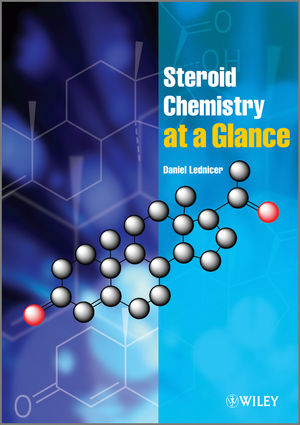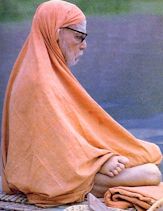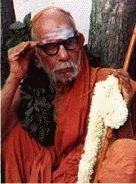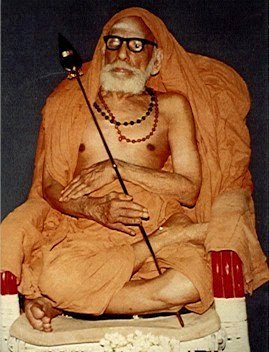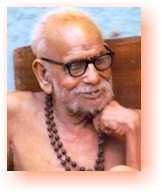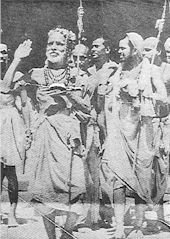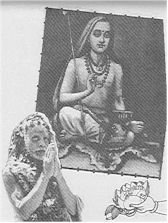Download this torrent:
magnet:?xt=urn:btih:69AA1E8B63B569B78CA176B9CFA317FDAD969397&tr=http%3A%2F%2Fbt2.t-ru.org%2Fann%3Fmagnet
1. Dynamics of Chromatography: Principles and Theory,
J. Calvin Giddings
2. Gas Chromatographic Analysis of Drugs and Pesticides,
Benjamin J. Gudzinowicz
3. Principles of Adsorption Chromatography: The Separation of Nonionic
Organic Compounds, Lloyd R. Snyder
4. Multicomponent Chromatography: Theory of Interference,
Friedrich Helfferich and Gerhard Klein
5. Quantitative Analysis by Gas Chromatography, Josef Novák
6. High-Speed Liquid Chromatography, Peter M. Rajcsanyi
and Elisabeth Rajcsanyi
7. Fundamentals of Integrated GC-MS (in three parts),
Benjamin J. Gudzinowicz, Michael J. Gudzinowicz,
and Horace F. Martin
8. Liquid Chromatography of Polymers and Related Materials, Jack Cazes
9. GLC and HPLC Determination of Therapeutic Agents (in three parts),
Part 1 edited by Kiyoshi Tsuji and Walter Morozowich, Parts 2 and 3
edited by Kiyoshi Tsuji
10. Biological/Biomedical Applications of Liquid Chromatography,
edited by Gerald L. Hawk
11. Chromatography in Petroleum Analysis, edited by Klaus H. Altgelt
and T. H. Gouw
12. Biological/Biomedical Applications of Liquid Chromatography II,
edited by Gerald L. Hawk
13. Liquid Chromatography of Polymers and Related Materials II,
edited by Jack Cazes and Xavier Delamare
14. Introduction to Analytical Gas Chromatography: History, Principles,
and Practice, John A. Perry
15. Applications of Glass Capillary Gas Chromatography, edited by
Walter G. Jennings
16. Steroid Analysis by HPLC: Recent Applications, edited by
Marie P. Kautsky
17. Thin-Layer Chromatography: Techniques and Applications,
Bernard Fried and Joseph Sherma
18. Biological/Biomedical Applications of Liquid Chromatography III,
edited by Gerald L. Hawk
19. Liquid Chromatography of Polymers and Related Materials III,
edited by Jack Cazes
20. Biological/Biomedical Applications of Liquid Chromatography,
edited by Gerald L. Hawk
21. Chromatographic Separation and Extraction with Foamed Plastics
and Rubbers, G. J. Moody and J. D. R. Thomas
22. Analytical Pyrolysis: A Comprehensive Guide, William J. Irwin
23. Liquid Chromatography Detectors, edited by Thomas M. Vickrey
24. High-Performance Liquid Chromatography in Forensic Chemistry,
edited by Ira S. Lurie and John D. Wittwer, Jr.
25. Steric Exclusion Liquid Chromatography of Polymers, edited by
Josef Janca
26. HPLC Analysis of Biological Compounds: A Laboratory Guide,
William S. Hancock and James T. Sparrow
27. Affinity Chromatography: Template Chromatography of Nucleic Acids
and Proteins, Herbert Schott
28. HPLC in Nucleic Acid Research: Methods and Applications,
edited by Phyllis R. Brown
29. Pyrolysis and GC in Polymer Analysis, edited by S. A. Liebman
and E. J. Levy
30. Modern Chromatographic Analysis of the Vitamins, edited by
André P. De Leenheer, Willy E. Lambert, and Marcel G. M. De Ruyter
31. Ion-Pair Chromatography, edited by Milton T. W. Hearn
32. Therapeutic Drug Monitoring and Toxicology by Liquid
Chromatography, edited by Steven H. Y. Wong
33. Affinity Chromatography: Practical and Theoretical Aspects, Peter Mohr
and Klaus Pommerening
34. Reaction Detection in Liquid Chromatography, edited by Ira S. Krull
35. Thin-Layer Chromatography: Techniques and Applications,
Second Edition, Revised and Expanded, Bernard Fried
and Joseph Sherma
36. Quantitative Thin-Layer Chromatography and Its Industrial
Applications, edited by Laszlo R. Treiber
37. Ion Chromatography, edited by James G. Tarter
38. Chromatographic Theory and Basic Principles, edited by
Jan Åke Jönsson
39. Field-Flow Fractionation: Analysis of Macromolecules and Particles,
Josef Janca
40. Chromatographic Chiral Separations, edited by Morris Zief
and Laura J. Crane
41. Quantitative Analysis by Gas Chromatography, Second Edition,
Revised and Expanded, Josef Novák
42. Flow Perturbation Gas Chromatography, N. A. Katsanos
43. Ion-Exchange Chromatography of Proteins, Shuichi Yamamoto,
Kazuhiro Naka-nishi, and Ryuichi Matsuno
44. Countercurrent Chromatography: Theory and Practice,
edited by N. Bhushan Man-dava and Yoichiro Ito
45. Microbore Column Chromatography: A Unified Approach
to Chromatography, edited by Frank J. Yang
46. Preparative-Scale Chromatography, edited by Eli Grushka
47. Packings and Stationary Phases in Chromatographic Techniques, edited
by Klaus K. Unger
48. Detection-Oriented Derivatization Techniques in Liquid
Chromatography, edited by Henk Lingeman and Willy J. M. Underberg
49. Chromatographic Analysis of Pharmaceuticals, edited by
John A. Adamovics
50. Multidimensional Chromatography: Techniques and Applications,
edited by Hernan Cortes
51. HPLC of Biological Macromolecules: Methods and Applications,
edited by Karen M. Gooding and Fred E. Regnier
52. Modern Thin-Layer Chromatography, edited by Nelu Grinberg
53. Chromatographic Analysis of Alkaloids, Milan Popl, Jan Fähnrich,
and Vlastimil Tatar
54. HPLC in Clinical Chemistry, I. N. Papadoyannis
55. Handbook of Thin-Layer Chromatography, edited by Joseph Sherma
and Bernard Fried
56. Gas–Liquid–Solid Chromatography, V. G. Berezkin
57. Complexation Chromatography, edited by D. Cagniant
58. Liquid Chromatography–Mass Spectrometry, W. M. A. Niessen
and Jan van der Greef
59. Trace Analysis with Microcolumn Liquid Chromatography,
Milos KrejcI
60. Modern Chromatographic Analysis of Vitamins: Second Edition,
edited by André P. De Leenheer, Willy E. Lambert, and Hans J. Nelis
61. Preparative and Production Scale Chromatography, edited by
G. Ganetsos and P. E. Barker
62. Diode Array Detection in HPLC, edited by Ludwig Huber
and Stephan A. George
63. Handbook of Affinity Chromatography, edited by Toni Kline
64. Capillary Electrophoresis Technology, edited by Norberto A. Guzman
65. Lipid Chromatographic Analysis, edited by Takayuki Shibamoto
66. Thin-Layer Chromatography: Techniques and Applications:
Third Edition, Revised and Expanded, Bernard Fried
and Joseph Sherma
67. Liquid Chromatography for the Analyst, Raymond P. W. Scott
68. Centrifugal Partition Chromatography, edited by Alain P. Foucault
69. Handbook of Size Exclusion Chromatography, edited by Chi-San Wu
70. Techniques and Practice of Chromatography, Raymond P. W. Scott
71. Handbook of Thin-Layer Chromatography: Second Edition,
Revised and Expanded, edited by Joseph Sherma and Bernard Fried
72. Liquid Chromatography of Oligomers, Constantin V. Uglea
73. Chromatographic Detectors: Design, Function, and Operation,
Raymond P. W. Scott
74. Chromatographic Analysis of Pharmaceuticals: Second Edition, Revised
and Expanded, edited by John A. Adamovics
75. Supercritical Fluid Chromatography with Packed Columns: Techniques
and Applications, edited by Klaus Anton and Claire Berger
76. Introduction to Analytical Gas Chromatography: Second Edition,
Revised and Expanded, Raymond P. W. Scott
77. Chromatographic Analysis of Environmental and Food Toxicants, edited
by Takayuki Shibamoto
78. Handbook of HPLC, edited by Elena Katz, Roy Eksteen,
Peter Schoenmakers, and Neil Miller
79. Liquid Chromatography–Mass Spectrometry: Second Edition,
Revised and Expanded, Wilfried Niessen
80. Capillary Electrophoresis of Proteins, Tim Wehr,
Roberto Rodríguez-Díaz, and Mingde Zhu
81. Thin-Layer Chromatography: Fourth Edition, Revised and Expanded,
Bernard Fried and Joseph Sherma
82. Countercurrent Chromatography, edited by Jean-Michel Menet
and Didier Thiébaut
83. Micellar Liquid Chromatography, Alain Berthod
and Celia García-Alvarez-Coque
84. Modern Chromatographic Analysis of Vitamins: Third Edition,
Revised and Expanded, edited by André P. De Leenheer,
Willy E. Lambert, and Jan F. Van Bocxlaer
85. Quantitative Chromatographic Analysis, Thomas E. Beesley,
Benjamin Buglio, and Raymond P. W. Scott
86. Current Practice of Gas Chromatography–Mass Spectrometry,
edited by W. M. A. Niessen
87. HPLC of Biological Macromolecules: Second Edition, Revised
and Expanded, edited by Karen M. Gooding and Fred E. Regnier
88. Scale-Up and Optimization in Preparative Chromatography:
Principles and Bio-pharmaceutical Applications, edited by
Anurag S. Rathore and Ajoy Velayudhan
89. Handbook of Thin-Layer Chromatography: Third Edition,
Revised and Expanded, edited by Joseph Sherma and Bernard Fried
90. Chiral Separations by Liquid Chromatography and Related
Technologies, Hassan Y. Aboul-Enein and Imran Ali
91. Handbook of Size Exclusion Chromatography and Related Techniques:
Second Edition, edited by Chi-San Wu
92. Handbook of Affinity Chromatography: Second Edition, edited by
David S. Hage
93. Chromatographic Analysis of the Environment: Third Edition,
edited by Leo M. L. Nollet
94. Microfluidic Lab-on-a-Chip for Chemical and Biological Analysis
and Discovery, Paul C.H. Li
95. Preparative Layer Chromatography, edited by Teresa Kowalska
and Joseph Sherma
96. Instrumental Methods in Metal Ion Speciation, Imran Ali
and Hassan Y. Aboul-Enein
97. Liquid Chromatography–Mass Spectrometry: Third Edition,
Wilfried M. A. Niessen
98. Thin Layer Chromatography in Chiral Separations and Analysis,
edited by Teresa Kowalska and Joseph Sherma
99. Thin Layer Chromatography in Phytochemistry, edited by
Monika Waksmundzka-Hajnos, Joseph Sherma, and Teresa Kowalska
100. Chiral Separations by Capillary Electrophoresis,edited by
Ann Van Eeckhaut and Yvette Michotte
101. Handbook of HPLC: Second Edition, edited by Danilo Corradini and
consulting editor Terry M. Phillips
102. High Performance Liquid Chromatography in Phytochemical Analysis,
edited by Monika Waksmundzka-Hajnos and Joseph Sherma
103. Hydrophilic Interaction Liquid Chromatography (HILIC) and Advanced
Applications, edited by Perry G. Wang and Weixuan He
104. Hyphenated and Alternative Methods of Detection in Chromatography,
edited by R. Andrew Shalliker
105. LC-NMR Expanding the Limits of Structure Elucidation,
edited by Gonnella N.C.